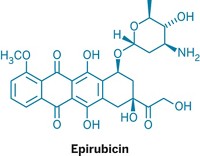Advertisement
Grab your lab coat. Let's get started
Welcome!
Welcome!
Create an account below to get 6 C&EN articles per month, receive newsletters and more - all free.
It seems this is your first time logging in online. Please enter the following information to continue.
As an ACS member you automatically get access to this site. All we need is few more details to create your reading experience.
Not you? Sign in with a different account.
Not you? Sign in with a different account.
ERROR 1
ERROR 1
ERROR 2
ERROR 2
ERROR 2
ERROR 2
ERROR 2
Password and Confirm password must match.
If you have an ACS member number, please enter it here so we can link this account to your membership. (optional)
ERROR 2
ACS values your privacy. By submitting your information, you are gaining access to C&EN and subscribing to our weekly newsletter. We use the information you provide to make your reading experience better, and we will never sell your data to third party members.
Materials
Cancer-causing asbestos may trigger autoimmune diseases too
by Celia Henry Arnaud
November 28, 2016
| A version of this story appeared in
Volume 94, Issue 47
Mesothelioma, a type of cancer that can attack the lining of the lungs, is considered the prime example of an asbestos-related disease. But it’s not the only one. Some of the diseases that researchers are beginning to link to asbestos exposure might be surprising.
COVER STORY
Cancer-causing asbestos may trigger autoimmune diseases too
Jean Pfau, an immunologist at Montana State University, is studying whether asbestos exposure alters the immune system and leads to increased risk of systemic autoimmune diseases such as lupus, rheumatoid arthritis, and scleroderma. She became interested in studying the asbestos-immune system connection after elevated levels of autoimmune diseases were identified in Libby, Mont. The town is home to a vermiculite mine contaminated with a class of needle-shaped asbestiform minerals called amphiboles.
“Mesothelioma is almost exclusively associated with asbestos and other elongated mineral fibers,” Pfau says. “Autoimmune disease is not. There are lots of triggers for autoimmune disease, so it becomes a lot more difficult to connect it to asbestos.” She studies the effects of asbestos in laboratory mice.
When Pfau gives her mice the type of asbestos found in Libby, they develop lupus autoantibodies, she says. Untreated mice don’t produce the same autoantibodies. In addition, Pfau says, amphibole asbestos elicits these autoimmune responses but another type of asbestos called chrysotile doesn’t (J. Immunotoxicol. 2013, DOI: 10.3109/1547691x.2013.847510).
The features of asbestos that cause the development of cancers such as mesothelioma in an exposed person may not be the same as the characteristics of asbestos that drive autoimmune diseases.
“For a long time, people have been saying that the longest fibers are the most pathogenic for mesothelioma,” Pfau says. “I think the very small fibers—the ones that can be ingested by immune cells, the ones that can traffic through the body—may be as or more important than the long ones when we’re talking about systemic autoimmune diseases,” she adds.
On top of that, Pfau think that autoantibodies are involved in the scarring associated with the asbestos-related lung disease asbestosis.
“We’ve found some of these antibodies and the cellular targets for them,” she says. “If we can block the antibodies and their ability to drive lung scarring, we could really help some of these people.”




Join the conversation
Contact the reporter
Submit a Letter to the Editor for publication
Engage with us on Twitter